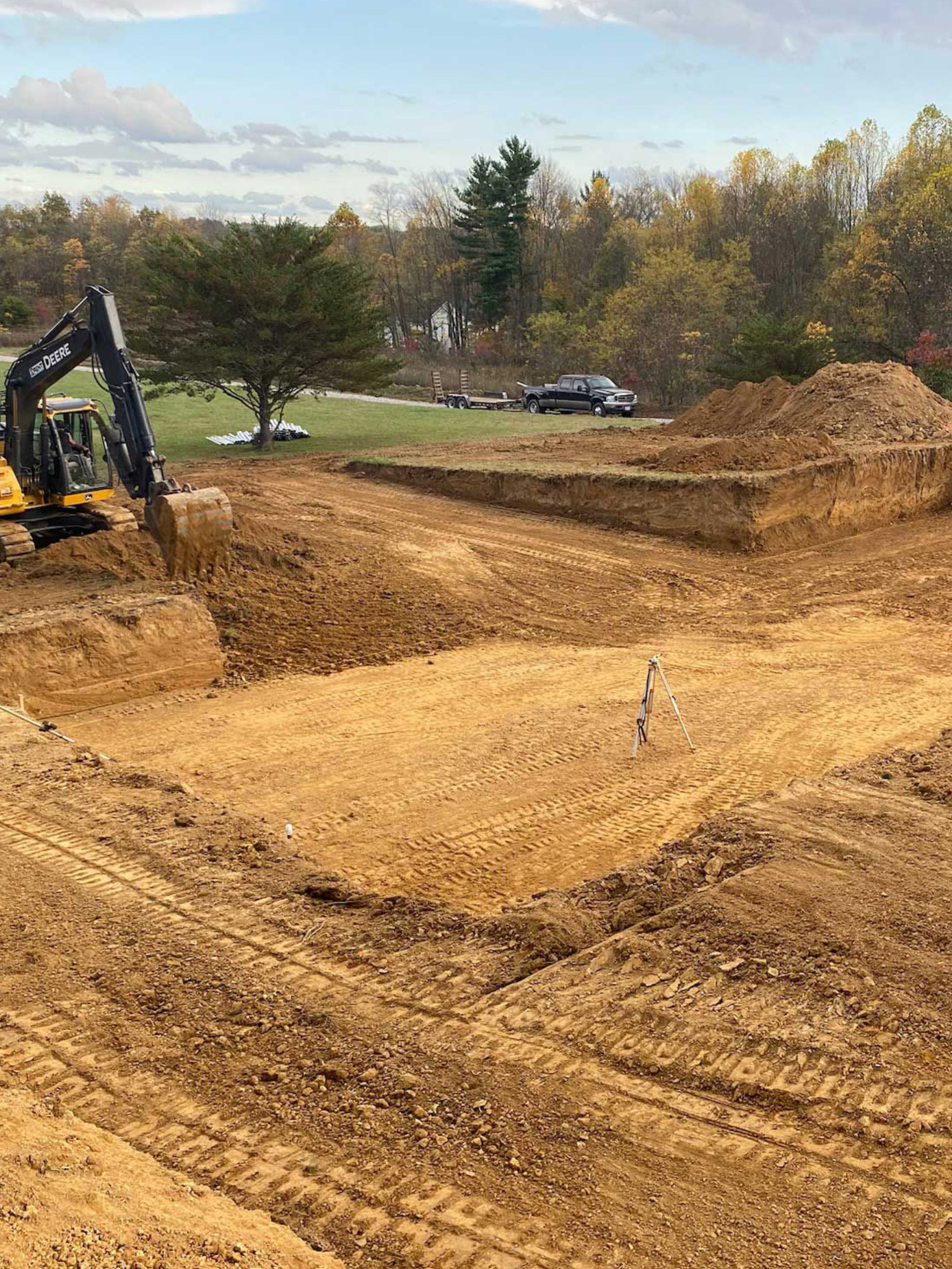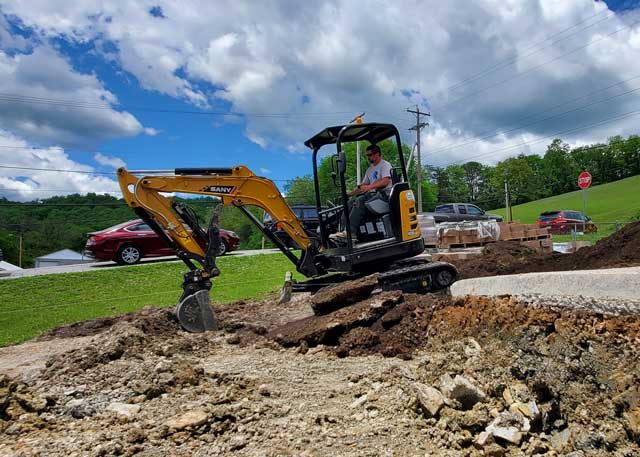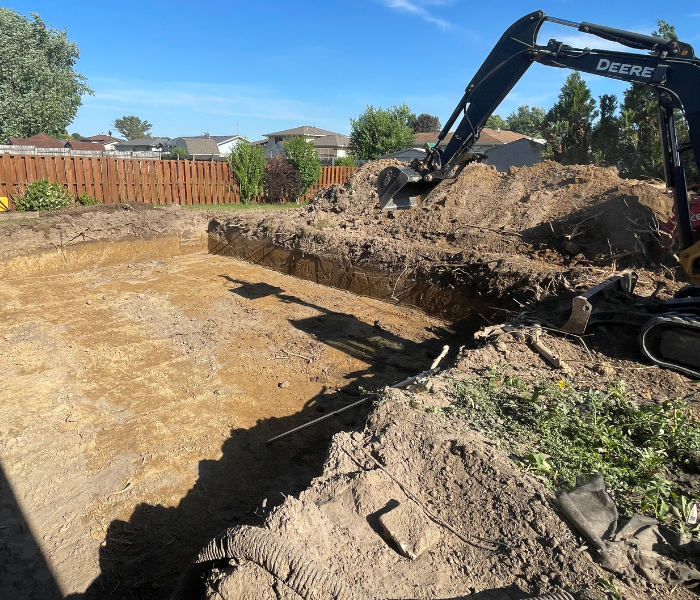Septic Ohio - Comprehensive Septic System Services in Ohio
Septic Ohio - Comprehensive Septic System Services in Ohio
Blog Article
Revealing the Art of Excavation: Pro Tips for Safe and Effective Excavating
In the realm of excavation, the mastery of effective and secure excavating is an art type that needs knowledge, precision, and adherence to well-known techniques. As soil is turned and planet is moved, the details of excavation reveal themselves, requiring a keen understanding of equipment, dirt composition, security procedures, and environmental factors to consider. The knowledge needed to navigate these elements properly can indicate the difference in between an effective excavation job and a potential calamity. By deciphering the layers of this intricate procedure, a globe of strategies and understandings awaits those looking for to elevate their excavation abilities to new elevations.
Relevance of Correct Tools
To guarantee the safety and performance of any excavation job, utilizing the appropriate tools is critical. The right tools not only enhance performance yet likewise alleviate threats related to digging. Excavation tasks differ in range and complexity, ranging from little household landscaping jobs to massive construction undertakings. No matter the task dimension, having the right devices can make a substantial distinction in the result.
Excavators are fundamental pieces of equipment in any kind of excavating procedure. These functional makers come in different sizes to fit different project requirements. Mini excavators are ideal for smaller sized tasks, while bigger excavators deal with much more extensive projects successfully. Backhoes are another essential tools kind, integrating the functions of a loader and an excavator in one equipment. They are valuable for jobs needing flexibility and maneuverability.
Excavators excel in tasks that need pushing huge quantities of dirt or particles. By investing in the appropriate devices, excavation jobs can be completed safely, on time, and with accuracy.
Understanding Soil Composition
An extensive understanding of dirt composition is essential for carrying out excavation projects with precision and safety and security. Comprehending the various kinds of soil is vital as it straight affects excavation methods, equipment selection, and overall project efficiency.
Sand particles are the biggest and offer excellent drainage yet supply little communication. Silt particles are smaller than sand but bigger than clay, supplying modest water drainage and communication. Clay fragments are the tiniest and offer high cohesion but inadequate water drainage. Raw material, such as decaying plant product, influences soil fertility and stability.
Prior to commencing excavation, carrying out soil examinations to identify its make-up and features is crucial. This information aids in choosing the suitable tools, carrying out precaution, and establishing excavation approaches tailored to the specific soil conditions - lancaster excavation. By recognizing soil make-up, excavation experts can enhance job end results while making certain safety and adherence to ideal practices
Safety And Security Steps and Protocols
Recognizing soil make-up is the cornerstone upon which precaution and protocols for excavation tasks are built, making sure the well-being of workers and the success of the undertaking. There are numerous key steps that must be implemented to reduce threats and prevent accidents. when it comes to security throughout excavation.
Firstly, prior to any kind of excavating commences, a comprehensive assessment of the site should be performed to determine any possible risks such as underground energies, unstable soil conditions, or close-by structures that could pose a threat. It is essential to have a skilled individual supervise the excavation procedure to ensure that all security methods are adhered to purely.
In addition, all employees entailed in the excavation has to be properly trained in risk-free digging practices and the proper operation of tools. By sticking to these safety and security procedures additional resources and procedures, excavation jobs can be completed efficiently and without incident.
Reliable Excavation Preparation
When starting an excavation job, precise planning is important to guarantee efficiency, safety next page and security, and effective results. Effective excavation planning entails numerous crucial steps that are essential for the smooth execution of the task. The first action is to conduct a complete site assessment to determine any possible dangers, such as underground utilities or unpredictable soil problems. This info is vital for creating an in-depth excavation plan that consists of security measures and run the risk of mitigation approaches.
As soon as the site evaluation is total, the following step is to produce a clear timeline and timetable for the excavation tasks. This includes identifying the series of tasks, devices needs, and manpower allowance. Appropriate scheduling assists stay clear of hold-ups and guarantees that the job remains on track.

Furthermore, interaction amongst all group participants is paramount during the preparation stage. Clear directives, regular updates, and effective coordination are important for a successful excavation project. By investing time and effort in careful preparation, excavation groups can dramatically enhance productivity, reduce risks, and achieve successful outcomes.

Managing Ecological Factors To Consider
With enhancing focus on environmental sustainability in building and construction methods, taking care of environmental considerations has ended up being a vital facet of excavation jobs. Excavation tasks have the prospective to impact the surrounding atmosphere with dirt erosion, debris overflow, environment interruption, and contamination of water sources. To reduce these dangers, it is vital to execute ideal methods that focus on environmental protection.

Additionally, appropriate waste administration is important to avoid dirt and water contamination. Implementing procedures for the disposal of dangerous materials, recycling of waste materials, and minimizing using hazardous chemicals can substantially minimize the ecological effect of excavation jobs. By integrating these practices right into excavation preparation and implementation, building and construction firms can make sure that their jobs are not only safe and effective but likewise environmentally responsible.
Verdict
Finally, grasping the art of excavation requires an extensive understanding of proper equipment, click reference dirt structure, precaution, and efficient preparation. By adhering to these guidelines and considering ecological variables, excavations can be performed safely and efficiently. It is vital to focus on safety and performance in every excavating project to make certain successful results.
As dirt is transformed and earth is relocated, the ins and outs of excavation reveal themselves, requiring a keen understanding of devices, soil make-up, safety protocols, and environmental factors to consider.To ensure the safety and security and efficiency of any kind of excavation job, using the proper devices is paramount.A thorough grasp of dirt structure is fundamental for implementing excavation projects with accuracy and security. Understanding the different types of soil is important as it straight affects excavation approaches, devices option, and general project efficiency. By understanding soil composition, excavation specialists can boost task end results while making sure safety and adherence to finest practices.
Report this page